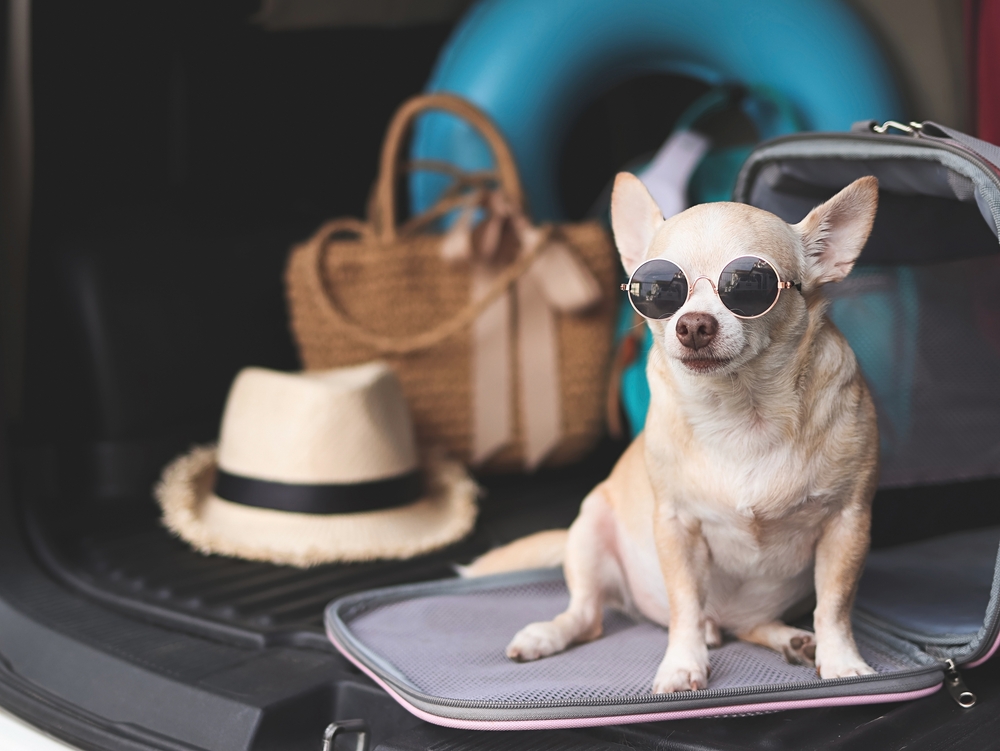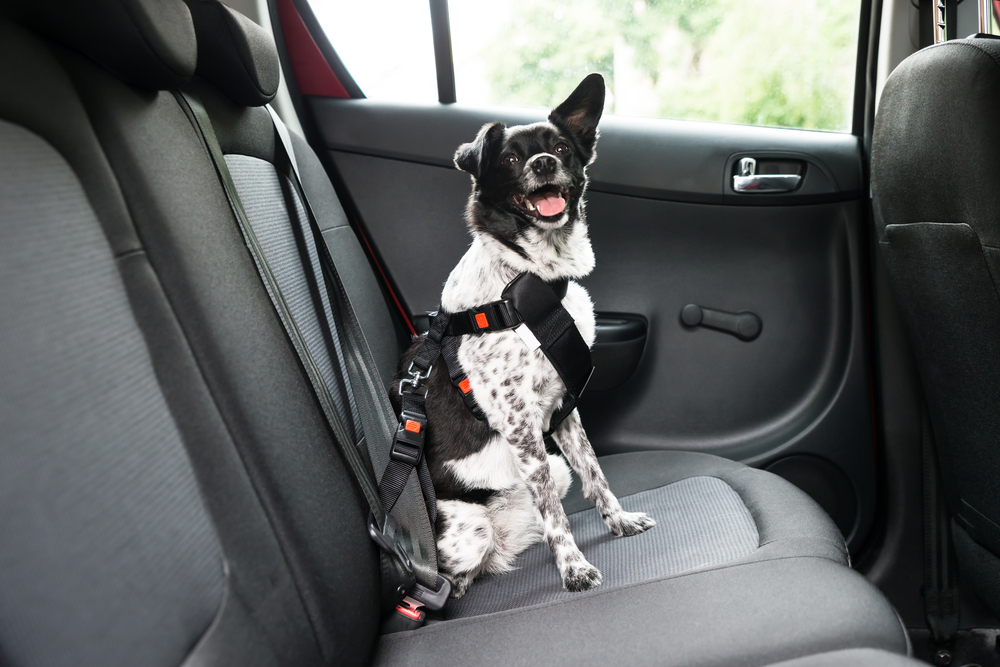No more motion sickness during car trips!
Yes, dogs can suffer from motion sickness too. This is not a condition that only affects humans, and poor pups have to deal with the same effects as we do. Nausea, dizziness, and the overall unpleasant experience are all there, and compared to us, dogs don’t know how to deal with these symptoms by themselves.
Maybe you plan a road trip and you want to bring your companion too, but you are afraid because they don’t seem to enjoy car rides. This is totally a possibility, but once you are prepared, you will know what you need to do in order to make your pup feel as comfortable as possible.
So, before you embark on your next adventure, you better take a look at this article because you are about to find a complete guide on how to manage the situation when you have a dog suffering from motion sickness.

Ventilation is really important
When you want to take care of a dog with motion sickness, keep in mind that proper ventilation is essential. Fresh air should be circulated through the vehicle the whole trip because this can greatly reduce discomfort and in the end make your pup feel better.
Make sure the air inside the car doesn’t have the chance to get stale because once it does, the ride can turn incredibly unpleasant for your dog. The simplest way to achieve that is to crack open a window. The steady stream of fresh air will do its job, and your companion will appreciate it. However, be careful not to open the window too far to expose your pet to powerful winds or the urge to stick their head out dangerously.
Another option is to buy a car seat hammock or mesh barrier because this will allow you to open the window and not risk any type of danger. This will keep your dog securely in place, and you will not have to worry.
Make things comfortable
When traveling with a dog prone to motion sickness, a comfortable atmosphere is a must. A secure and cozy travel crate is more important than many of us think, and it can positively change the experience of your pet.
Why is a travel car a good idea? It can offer a familiar environment for a dog found in distress. What you should do is let your companion explore the crate before the trip so they can get familiar with it.
Also, you can use their favorite blanket or their favorite toys to make things easier. Put them in the crate so the crate can catch the smell. Once your pup gets used to it, they will find it a safe space, and this can reduce the effects of motion sickness.
For dogs that prefer a harness, choose one designed for car travel. Pick up a snug padded harness that is both safe and comfortable at the same time. This is a good idea when you want to keep the pup safe and also give them some room to move around.
Plan some stops along the way
Just like you, your canine friend needs to take a break from the long road, and this is actually a required step when you have to take care of a pup suffering from motion sickness. This is a crucial part that will contribute significantly to their well-being.
Dogs need to stretch, relieve themselves, and enjoy a change of scenery during long car rides. But this is not all about physical needs. These breaks are amazing for relieving anxiety and motion sickness.
The best strategy is to plan stops every two to three hours. This will allow your dog to get the activity that they need and also remove them from the stressful environment. Take them out of the car and let them walk around a little bit. If they are up for some playtime, go ahead!
Plan your route in advance to identify pet-friendly rest areas or parks where your dog can safely explore.
Watch the feeding schedule
When you are planning a road trip with your dog that has to deal with motion sickness, the feeding schedule plays a big role. Preventing the sickness can be influenced by the last time your pup has eaten. Be sure that they don’t get on the road with a full stomach. This might seem insignificant, but it’s not.
Three hours before you leave, try to feed your dog a light meal. This frame of time will let them digest the food, and the risk of discomfort will be greatly minimized. Avoid feeding them large meals and rich meals. For example, large amounts of wet food are not a good idea.
It’s also a good idea to pack a small selection of your dog’s favorite treats for the trip. Their beloved snacks can offer them the comfort and reassurance they need during these scary times. But keep in mind that you will offer these treats only when the car is stationary. This is the most effective strategy.
For longer travels, try taking stops to offer water and light food if necessary. Staying hydrated is crucial, but don’t allow your dog to drink too much water at once, as this might upset their stomach.

Talk with your vet
This might sound like the obvious choice, but many people forget to consult their vet before they hit the road with a dog that struggles with motion sickness. Sometimes, despite your best efforts, the tricks won’t work, and you will need to talk to a specialist and find a proper solution.
Veterinarians are the only ones who can assess your dog’s specific needs and give them the best remedies. They can prescribe various medications and supplements, such as ginger supplements and various meds that can reduce nausea.
A vet can also help determine if there are underlying health issues contributing to your dog’s symptoms. Before giving your pup any medication, you have to see a vet. You can’t just start introducing meds in their routine without appropriate assistance. This is very risky.
In addition to medication remedies, your veterinarian may recommend behavioral strategies, such as gradually introducing your dog to the car or utilizing pheromone sprays to create a relaxing setting.
Positive reinforcement
This is probably the most powerful tool when it comes to training dogs but also when you want to help them get over motion sickness. You will reward good behavior, and this can make the dog associate car rides with something positive. This means they will stop being afraid of the car, and if you are lucky, they might start to actually enjoy the travel.
You can start by praising them and giving them small treats whenever they are relaxed during the time they spend in the car. For example, if they are sitting quietly during a trip or when they are relaxed during the breaks, you can apply this method. Over time, these rewards will reinforce the idea that car rides are a pleasant and rewarding experience.
Make sure that after the journey, if the pup is in the mood, you offer extra playtime and affection. This is a great way to bond, and it can also help your dog to understand that there is nothing to be scared of.
This is an amazing toy that is specially designed to relieve anxiety in dogs: WOOF Pupsicle – Long-Lasting Interactive Dog Toy to Keep Your Pup Distracted
You should also read: 8 Amusing Canine Habits That ALWAYS Make Us Smile












